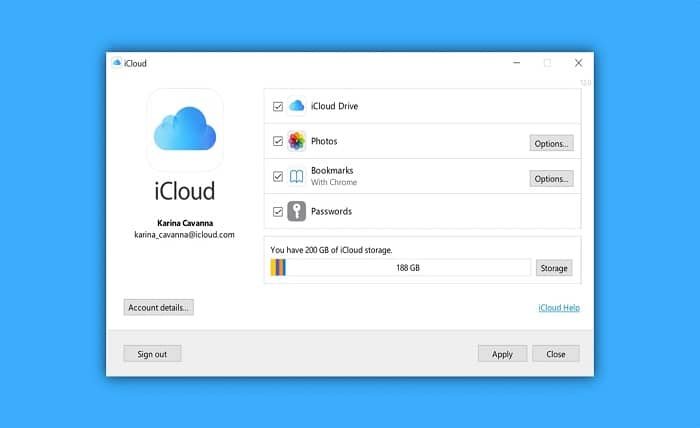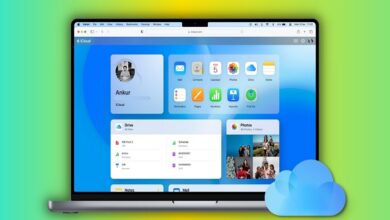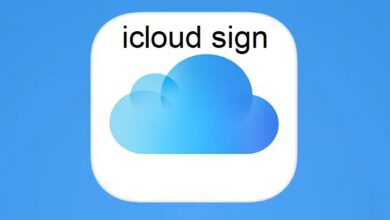How to Download iCloud for Windows: A Complete Guide for Seamless Cloud Access

In today’s digital era, cloud storage is an essential tool for managing and accessing files seamlessly across multiple devices. iCloud, Apple’s cloud storage service, is one of the most popular cloud platforms, especially for Apple device users. However, many users with Windows computers may wonder how they can take advantage of iCloud’s benefits. The answer is simple: download iCloud for Windows. In this blog post, we will walk you through everything you need to know about downloading and setting up iCloud for Windows, how to use it effectively, and some troubleshooting tips for a smooth experience.
What is iCloud for Windows?
Before diving into the download process, it’s important to understand what iCloud for Windows is. iCloud is Apple’s cloud storage service that allows users to store and sync data, including photos, files, contacts, calendars, and more, across multiple devices. It is primarily designed to work seamlessly with Apple devices, such as iPhones, iPads, and Macs.
However, Apple also offers iCloud for Windows users. By downloading iCloud for Windows, users can sync their iCloud content to their Windows PC and access their Apple-related data on a non-Apple device. With iCloud for Windows, you can easily access your iCloud Drive files, view your photos and videos, and keep your contacts and calendars up to date, all from your PC.
How to Download iCloud for Windows
Downloading iCloud for Windows is a straightforward process. Here’s how you can do it:
- Visit the Official Apple Website:
Go to the official Apple website or Microsoft Store to download iCloud for Windows. It’s important to ensure that you’re downloading the software from a trusted source to avoid any security risks. - Download the iCloud Setup File:
Once on the website or store page, click on the download link to get the iCloud setup file. The download should start automatically. - Install the Software:
After the download is complete, double-click the setup file to begin the installation process. Follow the on-screen instructions to install iCloud for Windows on your PC. - Sign in with Your Apple ID:
Once the installation is complete, launch the iCloud application and sign in using your Apple ID. If you don’t have an Apple ID, you’ll need to create one to use iCloud. - Choose What You Want to Sync:
After signing in, iCloud for Windows will prompt you to select what you want to sync. You can choose from options like iCloud Drive, Photos, Mail, Contacts, Calendars, and Bookmarks. Select the ones that suit your needs. - Complete the Setup:
Once you’ve chosen the items to sync, click the “Apply” button to complete the setup. iCloud will begin syncing your data with your Windows PC.
Now, you’re ready to start using iCloud for Windows to access and manage your Apple data right from your PC.
Key Features of iCloud for Windows
After you download iCloud for Windows, you’ll gain access to a variety of useful features that allow you to manage your Apple data effectively. Some key features include:
- iCloud Drive:
With iCloud for Windows, you can access your iCloud Drive, which stores all your documents and files in the cloud. You can easily manage your files from your Windows PC and sync them across all your devices. - iCloud Photos:
If you’re an iPhone or iPad user, you’re likely familiar with iCloud Photos, which automatically backs up your photos and videos. With iCloud for Windows, you can access all your photos and videos on your PC and even upload new ones to your iCloud account. - Mail, Contacts, and Calendar Syncing:
iCloud for Windows lets you sync your Apple Mail, Contacts, and Calendar with your PC, making it easier to manage your personal and work-related communication and appointments. - Bookmarks Syncing:
If you use Safari on your Apple devices, you can sync your bookmarks to your Windows PC. This feature ensures that your favorite websites are always accessible, no matter what device you’re using. - Find My iPhone:
iCloud for Windows also provides access to the “Find My iPhone” feature, which helps you track your Apple devices if they are lost or stolen.
How to Use iCloud for Windows Effectively
Now that you’ve downloaded iCloud for Windows and synced your data, it’s time to explore how to use it effectively. Here are some tips to make the most of iCloud on your PC:
- Access Files from iCloud Drive:
After syncing, you can access your iCloud Drive files directly from File Explorer on your Windows PC. Simply open the iCloud Drive folder to view, edit, and upload files. Changes made on your PC will automatically sync with other devices linked to your Apple ID. - View Photos and Videos:
To access your iCloud photos, open the iCloud Photos app from the Start menu or taskbar. You can view, download, and organize your photos and videos. To upload new media, simply drag and drop files into the iCloud Photos folder. - Sync Contacts, Calendars, and Emails:
Once you’ve selected the appropriate options during the setup, your contacts, calendars, and email will be available in apps like Microsoft Outlook. Any changes made in Outlook will sync back to iCloud and your Apple devices. - Backup Your Data:
iCloud automatically backs up your iPhone, iPad, and other Apple devices. While you can’t directly back up Windows PCs to iCloud, you can back up important files and media to iCloud Drive, ensuring they’re safely stored in the cloud. - Use iCloud’s Web Interface:
In addition to the desktop app, you can also access iCloud through a web browser. Simply visit iCloud.com, sign in with your Apple ID, and access your iCloud Drive, Photos, Mail, Contacts, and other synced content.
Troubleshooting Common iCloud for Windows Issues
Even though downloading and using iCloud for Windows is usually a smooth process, users may encounter issues from time to time. Here are some common problems and how to fix them:
- iCloud Not Syncing:
If your iCloud isn’t syncing properly, try restarting the application or your PC. You can also check your internet connection, as iCloud requires a stable connection to sync data. - Login Issues:
If you’re having trouble signing in, ensure that your Apple ID credentials are correct. You may also want to check for any security updates from Apple or enable two-factor authentication for added security. - iCloud Photos Not Syncing:
If your photos aren’t syncing, try restarting the iCloud Photos app or check your settings to ensure that the iCloud Photos option is enabled. - Low Storage Space:
iCloud provides a limited amount of free storage. If you’re running out of space, you can purchase additional iCloud storage or manage your existing storage by deleting old files and backups. - App Not Opening:
If the iCloud for Windows app isn’t opening, ensure that your Windows operating system is up to date. You can also try reinstalling the app if it’s not launching properly.
iCloud for Windows vs. Other Cloud Services
While iCloud for Windows is an excellent option for Apple users, there are other cloud storage services available that you can compare it with. Here’s how iCloud stacks up against some popular cloud services:
- Google Drive:
Google Drive is a widely used cloud storage service that works seamlessly across all devices. While iCloud is more optimized for Apple products, Google Drive offers more flexibility when it comes to cross-platform usage. - Dropbox:
Dropbox is known for its ease of use and file sharing capabilities. Unlike iCloud, Dropbox is platform-independent and offers better collaboration features for business users. - OneDrive:
OneDrive, offered by Microsoft, is a strong contender, especially for Windows users. While iCloud is more focused on Apple users, OneDrive integrates well with Windows and offers excellent syncing capabilities across devices.
While all these services are great, iCloud for Windows is ideal for users who primarily use Apple products and want to sync their data with their Windows PC seamlessly.
Conclusion
Downloading and using iCloud for Windows is a great way for Apple users to access their iCloud data on a Windows PC. With its variety of features such as syncing files, photos, emails, and contacts, iCloud for Windows makes it easy to keep all your data in sync across multiple devices. While setting up and using the service is simple, it’s essential to follow best practices for security and troubleshooting to ensure a smooth experience. Whether you’re an individual looking to access personal data or a business user needing efficient data syncing, iCloud for Windows is a powerful and convenient tool to help you manage your cloud storage needs.
FAQs
- How do I download iCloud for Windows?
You can download iCloud for Windows from the official Apple website or the Microsoft Store. Once downloaded, follow the installation instructions. - Can I access iCloud for Windows on all Windows versions?
iCloud for Windows is compatible with Windows 10 or later. Ensure that your operating system meets the minimum requirements for installation. - Is iCloud for Windows free to use?
iCloud for Windows is free to download, but you may need to purchase additional storage if you exceed the 5GB of free storage Apple offers. - Can I use iCloud for Windows with a Microsoft account?
iCloud for Windows works with your Apple ID, not your Microsoft account. However, you can sync iCloud data with apps like Microsoft Outlook. - What should I do if iCloud for Windows isn’t syncing properly?
If syncing issues occur, restart the iCloud app, check your internet connection, or sign out and sign back in to your Apple ID.





